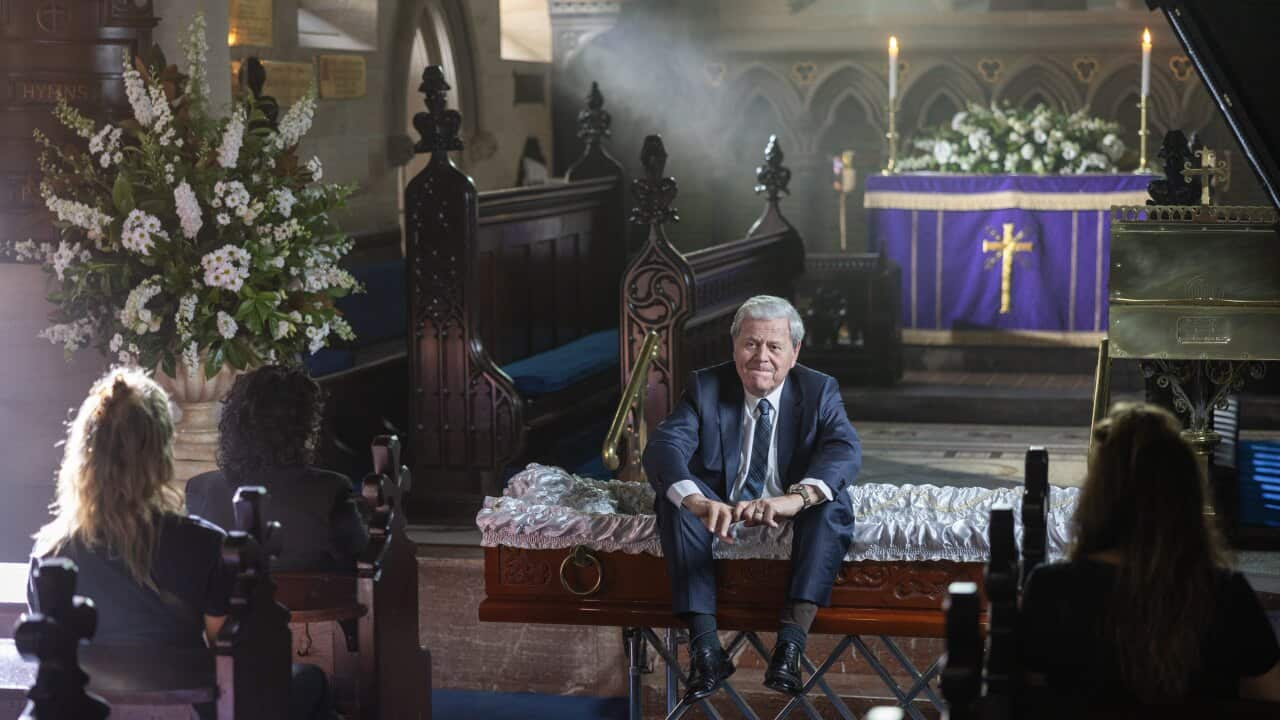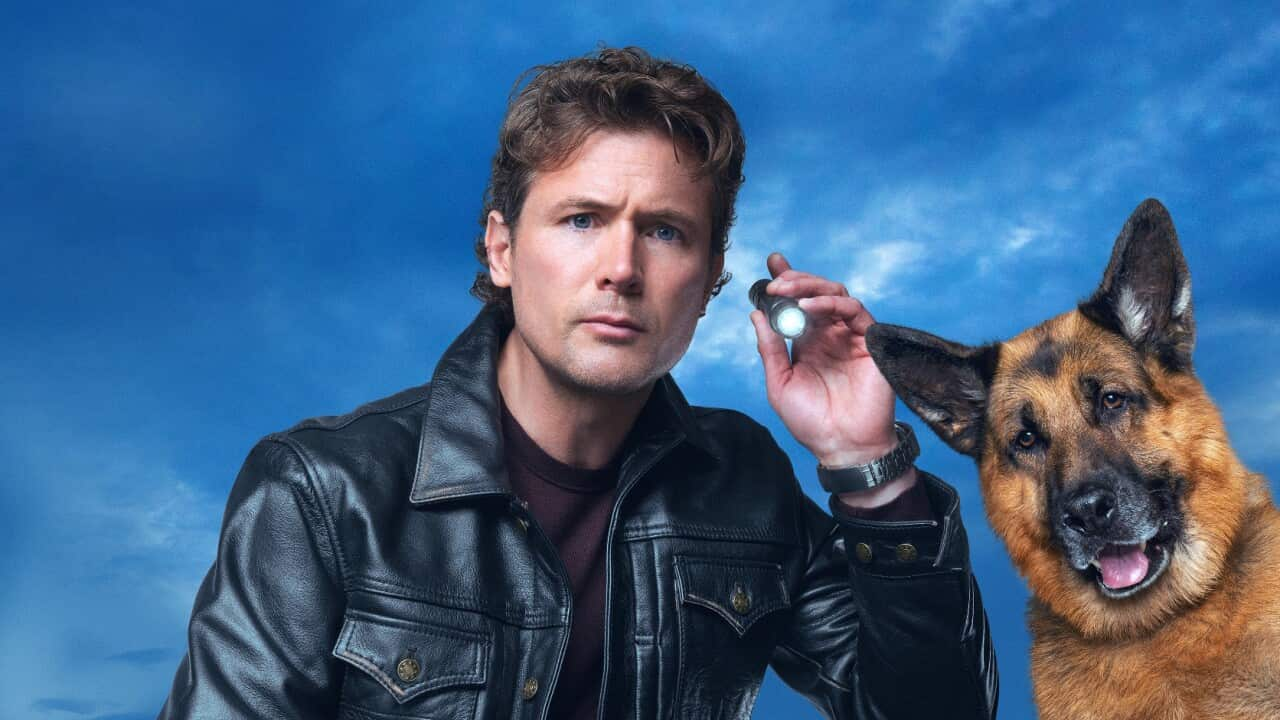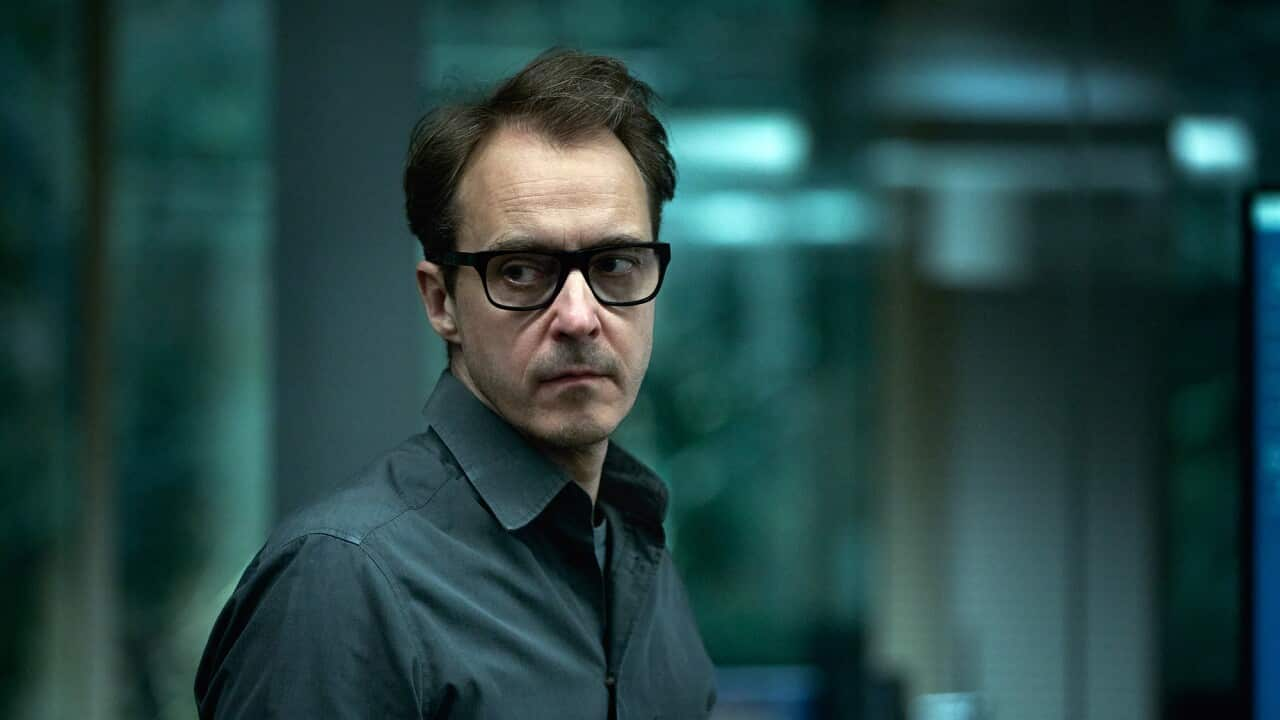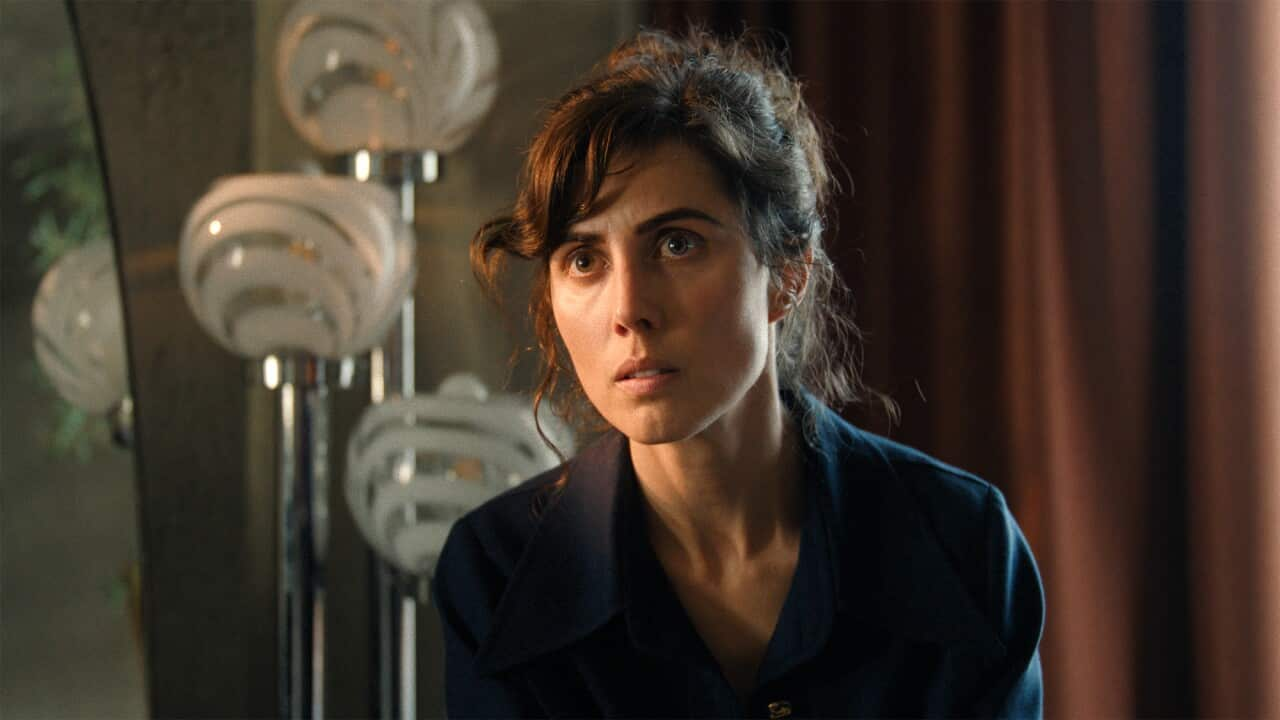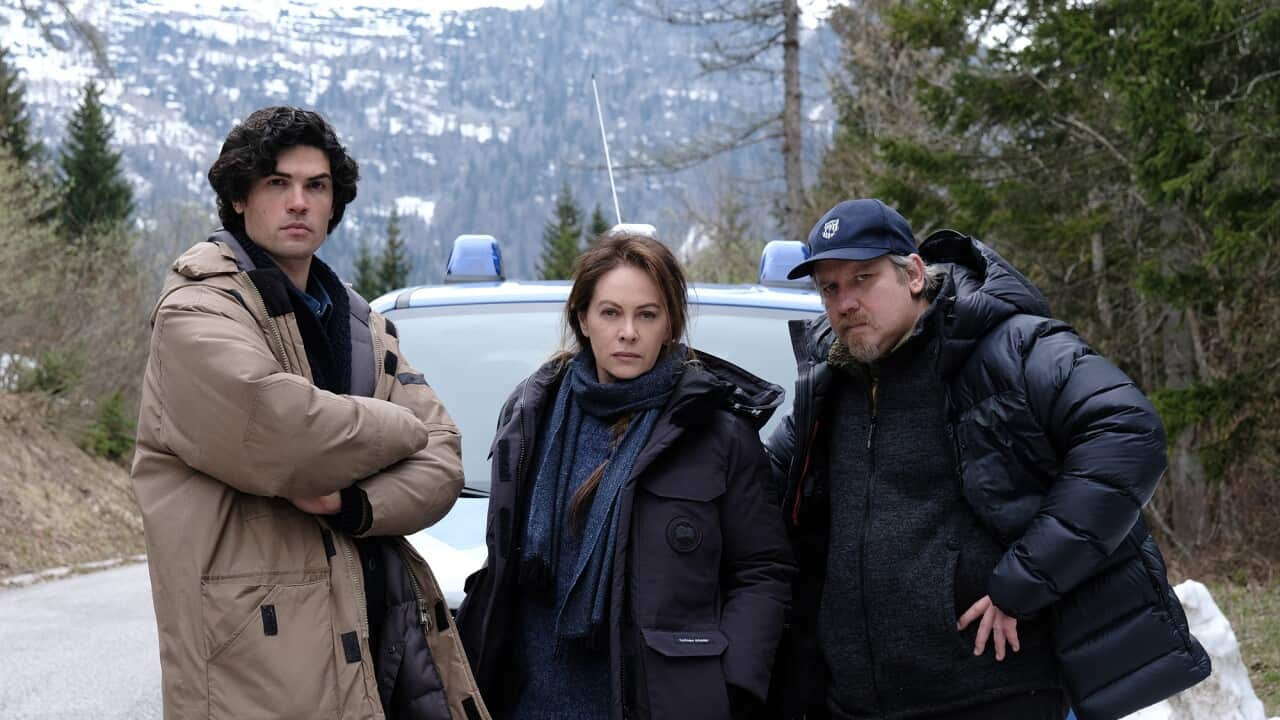It’s 1988 in Berlin, the year before the fall of the Berlin Wall. And just as Christine Steffen (Svenja Jung), a revue dancer in the Friedrichstadt-Palast’s famous ‘Kick Line’, has a change to get her long-awaited first solo, her life is turned upside down as she finds herself face-to-face with her unknown twin sister from West Germany.
For Christine and her sister Marlene, the obvious question – how could they have a twin they know nothing about? – is soon followed by more as the sisters swap passports and identities to visit each others’ families, bringing enormous risk to both their lives.

Svenja Jung in 'The Palace'. Credit: Krzysztof Wiktor
The story offers plenty of dramatic potential, but the making of the six-part series is just as fascinating. As director Uli Edel (Christiane F., Last Exit to Brooklyn, The Baader Meinhof Complex) explains, world events and theatre renovations threw unusual difficulties in front of the crew and saw the actors, dancers and crew working late into the night in order to film at the Friedrichstadt-Palast (the that continues to draw audiences from around the world).
“I was not very familiar with revue theatres. At most, I thought of the mass ornaments of the old Busby Berkeley films. My subsequent visit to the Friedrichstadt-Palast then became my Saul Paul experience. Of the 1800 spectators in the hall, I was probably the one who applauded most often and most vigorously. And when the legendary kickline with 32 dancers presented their perfect formations on stage, I knew I had hit the jackpot with my spontaneous acceptance [of the offer to direct],” Edel says in his director’s statement about the series.

The series recreates the theatres famous 'kickline'. Credit: Stephan Rabold
“However, my enthusiasm would have been more subdued if I had known at the time that I would have to manoeuvre this production through the worst pandemic we had ever experienced. It wasn't a small production with which I went into the starting blocks. The crew was up to 300 strong, including more than 80 speaking roles and 140 dance legs, who could only comply with the distance rules on the huge stage of the Friedrichstadt-Palast to a limited extent.
"In the end, we shot the 270 minutes of the series on 77 days of shooting spread over ten months. We had to interrupt production five times because of Corona – more often than all the other film productions. It was the first time I worked with so many dancers (70) and a handful of dancers who came from 30 countries together. Without the incredibly dedicated crew around me, I wouldn't have been able to finish this production.

Filming went late into the night in order to capture scenes at the Friedrichstadt-Palast. Credit: Julia Terjung
“Before we had even started, the Friedrichstadt-Palast was closed for many months because of the pandemic. We hoped that it would now be all the more available to us for filming. But due to extensive renovation work during the day, we finally only had the nights to shoot there. It is not difficult to imagine what this meant for the crew and especially for the dancers. But we all wanted to make this film and were happy to be able to shoot at all. The dancers often performed all night in front of our cameras until they were exhausted, wanting to show that they were the best even under these extreme conditions.”

Uli Edel on stage during filming. Credit: Julia Terjung
But even before filming began, there was another challenge: finding an actress who could portray two very different women.
“To cast the leading role, we held extensive casting sessions. The difficulty was to find a young actress who could both keep the viewer's interest three times for 90 minutes [the series was originally planned as three episodes] and dance the soloist credibly, i.e. embody the best of the 32 excellent dancers. In addition, she had to play a double role: the revue dancer socialised in East Berlin and her twin sister from the capitalist West. A double Lottchen. A great challenge for every actress.
“Many of the applicants were either good dancers or good actresses. Rarely, however, were they both. When Svenja auditioned, I was quickly convinced – she had what the role demanded: great passion for acting and enormous dancing talent. She became my leading actress. Svenja immediately threw herself into training and kept it up for ten months, until the end of filming.“
Jung exlains the physical differences between the two were part of her prepararation for the role.
“Physically there is simply a lot separating the two. Where Chris moves all over the room and with her whole body, but does not address things immediately, Marlene is a little stiffer in her posture and more direct in her way of expressing herself.
“For Chris, I trained almost daily for three months to credibly portray a dancer. I've danced a lot in my life, but never revue, I had to work for it. Then it was mainly about the movement qualities and the voices of the two characters. Marlene's voice should be a little deeper and harsher, Chris's voice higher and warmer. The position of the head, the way of expressing oneself, the style of speech were also very important to me in the process of finding the characters. Where Marlene is more confrontational, Chris avoids it.“
As the series unfolds the sisters try find out what led to their separation before the Wall was built – and discover that they have more in common than their very different upbringings might suggest.
The Palace is streaming now at SBS On Demand.
Stream free On Demand

The Palace


